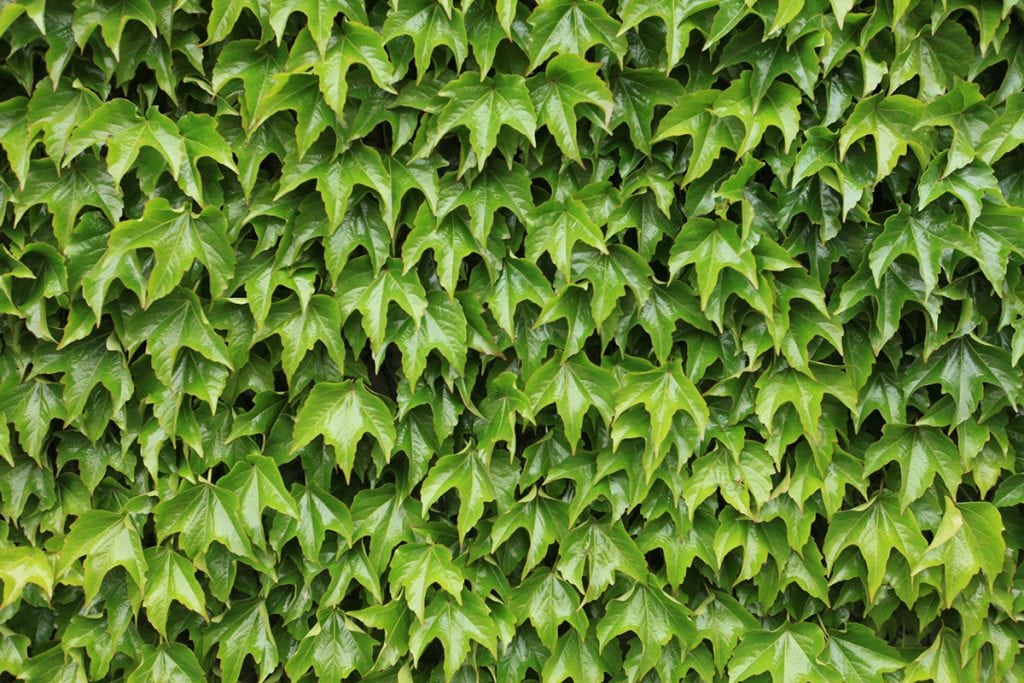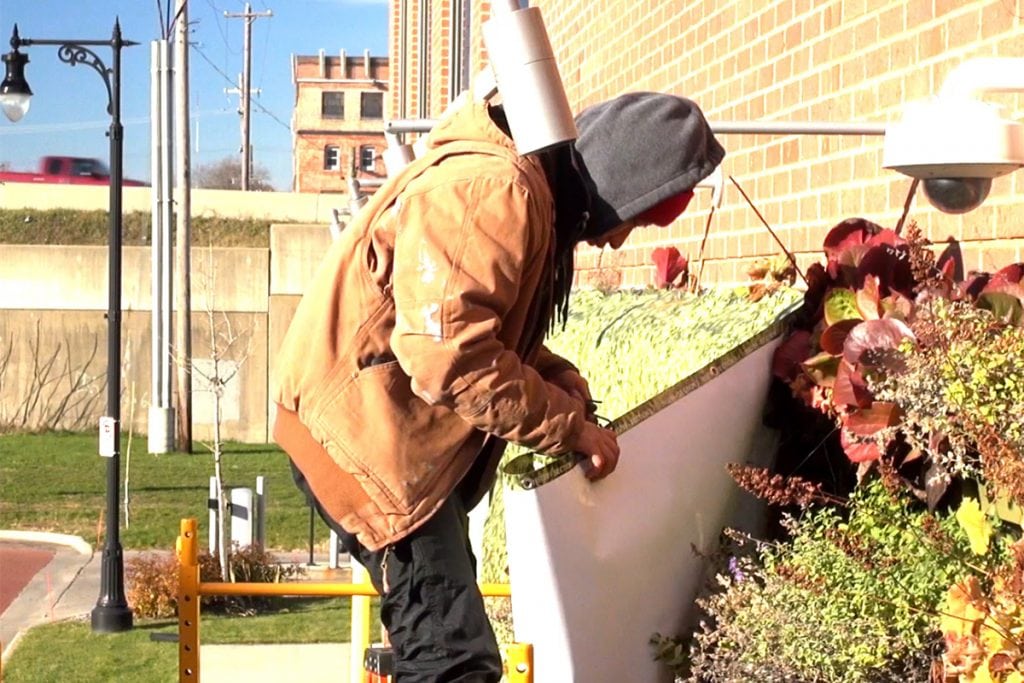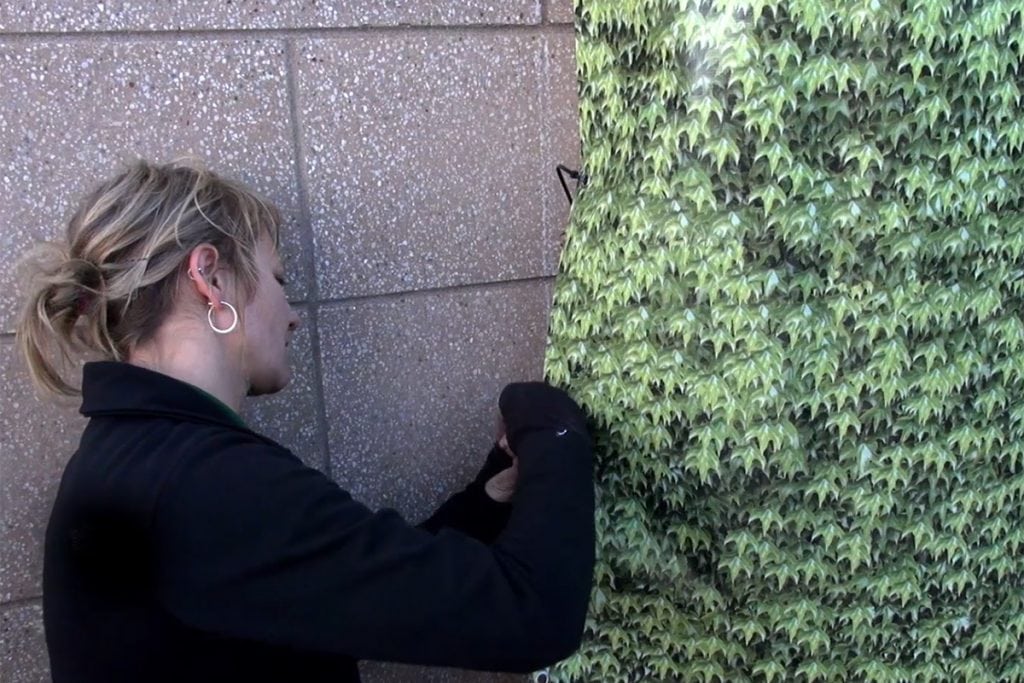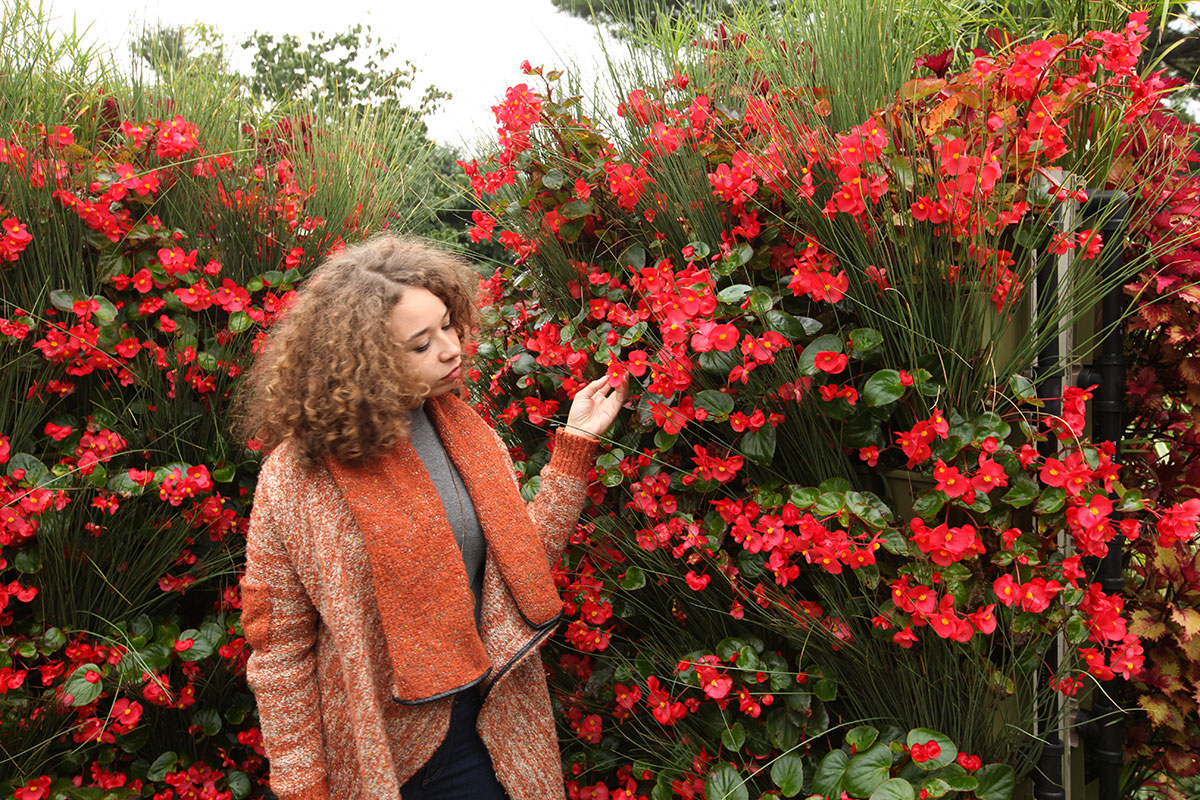The need to replant during spring will vary with the severity of winter, diligence to proper care, and plant material.
Annuals, Vegetables, & Herbs
These plants require replacement at the beginning of every growing season. There are two ways of doing this:
- Drop off your empty planter inserts at a local nursery to have them grow the plants in their greenhouses. If they begin 6-8 weeks prior to your last frost date, you can begin harvesting right away once you plant them.
- Plant the liners yourself using 2 or 3 inch starter plants from your local garden center.
In any event, it is important to thoroughly wash out the planter inserts and start with fresh potting soil.
Soil Type
Organically rich potting soil, available at every garden center.
Perennials & Tropicals
By definition, perennials, including tropical perennials, have the potential to live forever. But, when grown in a container such as the living wall planter insert, they will eventually become root-bound, and at some point will need to be replaced, or divided and replanted. How long they will go with out the need for division is a factor of the particular plant’s habit, its root characteristics, and climate. Many perennials are expected to last up to three years before becoming root-bound in the LiveWall system.*
How do you know when it is time to replant and divide a perennial? You know it is time when the plant has become so root-bound that the growth and flowering become stunted. When this occurs, the plants can be removed, divided and replanted. Or, they can be composted and replaced with new plants. Replacements should be done during spring or early summer so that the plants become well established prior to winter.
Soil Type
Potting soil containing pine bark, as it decomposes very slowly.
Sedums & Succulents
Because most Sedums and succulents have very fine root systems, they have the potential to survive for many years without becoming root bound. Some could be sustained for over a decade depending on the species and care. As such, they need to be potted in a soil that will hold its structure for many years.
Soil Type
“Alpine” soil-type that is gritty and highly inorganic (similar to blends used for green roofs).
*Consider a vinyl cover to reduce winter perennial plant losses.
Managing moisture of perennial plants during winter can be challenging. LiveWall supplies grommeted, vinyl winter covers to aid in the overwintering of “perennial” plants in cold winter climates.
Why is this needed?
In cold winters, especially those with sunny windy conditions, the plants can literally be “freeze-dried.” By covering with a vinyl winter cover, this effect is greatly lessened. Winter covers act to moderate temperature highs and lows, block the wind, and hold in moisture.
What do they look like?
They are printed with an attractive mid-green, translucent Boston ivy graphic.

How are they used?
- Winter covers are applied just before the soil freezes, approximately December 1 in Michigan for example, and only after THROROUGHLY WATERING THE SOIL (the day before covering). The plants should not be pruned before they are applied. This helps hold in moisture.
- Winter covers are typically removed during mid to late March in Michigan for example. Upon removal, plants are immediately and thoroughly watered (and thereafter watered according to need—see LiveWall watering chart), but not pruned until after danger of late frost, as they will have tender new shoots among last year’s foliage and stems.
How are they attached?
- They are tightly applied with zip ties, bungee straps, or ¼ inch nylon rope. They can be anchored into the support wall, the LiveWall frame, or the planter boxes. Some installers drill small holes in the top or bottom lip of the planters, which is relatively unnoticeable. Winter covers should be tightly attached to structure, with every grommet. If the wall is large, it will require multiple covers, and the grommets in the middle should be attached to the planters or structure, rather than just connected together. All grommets should be tightly attached to structure.
- If the site is very windy, consider adding some strapping or roping material across the face of the cover, to prevent billowing or flapping in strong winds.
What sort of results can I expect?
All walls, exposures, and weather conditions are unique, so there are no guarantees. However, when winter covers have been properly used, they have greatly improved overwintering success—with some walls in Michigan experiencing nearly 100% survival.





